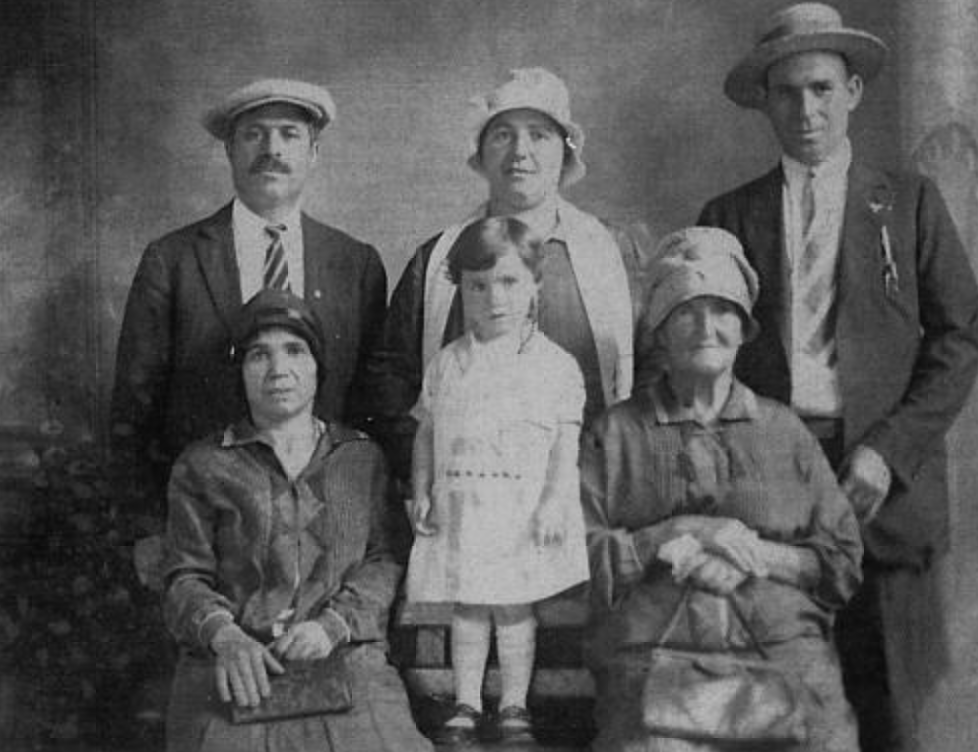
They’re all but ancient history now, but for a time, the Black Hand used to be a household name. As we’ve explored in our profile of the great detective Joe Petrosino, the Black Hand were the precursor to the later Italian mafia, a loosely-organized collection of thugs, extortionists, and kidnappers who went about terrorizing ordinary folks in the early-twentieth century. Brutal, violent, and unscrupulous, the Hand feared hardly anyone—until they met Minnie Orsino.
The story starts on May 29, 1922, when Gabriele Fiore, a twenty-seven year-old millworker, was murdered in Canonsburg, Pennsylvania. Seeking to return home to Italy, from which he had immigrated years earlier, Fiore had withdrawn a sum of money from his bank in preparation for his departure. Needless to say, he never made the boat. Cornered in an alley, Fiore was robbed and murdered by three men—Angelo Fragassa (the triggerman), Marcantonio Daniele, and Marcantonio’s son John, all Italians, and all members of La Mano Nera.

With the murderers on trial, the state of Pennsylvania saw their opportunity to crush the local branch of the Hand. But they needed evidence—of which there was little—and witnesses. Fortunately, Erminia—Minnie—Orsino had heard voices outside her house on Third Street that night, and had stepped to the window to see what the commotion was about. She saw five men, all of whom she recognized, and saw one of them climb into the open window of a house nearby. A few minutes later came the gunshot.
As A. Parker Burroughs tells it in True Murder Mysteries of Southwestern Pennsylvania, Minnie’s testimony was “critical not just in placing Fragassa at the scene of the slaying but also in implicating Marcantonio Daniele, the reputed head of the Canonsburg Black Hand. The prosecution would seize on the episode outside her window as evidence that Daniele had ordered the killing.”
Were Minnie to testify, retaliation would be almost certain. She was quickly placed under witness protection, and for her safety the judge had her appear in court behind closed doors without any public spectators allowed. With her testimony in hand, as well as other Italian informants already in prison who could speak to the structure of the area Black Hand, Fragassa and Daniele padre were convicted the week before Thanksgiving: murder in the first.

That promised retaliation did eventually come—even before the last conviction had been read aloud. Burroughs notes that an unidentified man broke into Minnie’s home that week and threatened to kill her, but was only scared away by Minnie’s boarders. Following the trial, even Daniele’s own attorney and a couple of local thugs showed up and pressured her one night to recant her testimony, in order to spare the killer from meeting the electric chair. Perversely, they also promised her protection of the kind that only the Hand could provide.
Thankfully, the cops showed up during this act of blatant witness intimidation, sparing Minnie herself from any further threats or abuse, and over time, thanks to the efforts of Washington County law enforcement, the presence of the Black Hand in the area did diminish once the capos of the dragon were cut off. But peace would be short-lived: several years later, in March 1926, Minnie’s husband Ottavo would fall mysteriously ill one afternoon and die—poisoned, the autopsy showed, by arsenic.

Minnie’s story didn’t end there, instead taking several more unusual turns. After Ottavo died, she ended up marrying one of the jailed Italian informants from the Fiore trial, a man named Alfonso Polifrone. After that marriage collapsed—we wonder why—her granddaughter Erma recalled that Minnie ended up as madam of a whorehouse. “She used to call out to men from the window,” Erma said. “I asked my mom about it and she just said that she [Minnie] had a lot of lady friends. She was strict with her two sons. She went to the Black Hand for money to get them through college.”
Ratting out a criminal organization for murder, resisting their attempts to intimidate and kill you, then insisting they pay for your children’s education? That, dear readers, is una spina dorsale d’acciaio—a spine of steel!
Looking for more to read during quarantine? Check out our quaran-reads here. Finding us for the first time, and want to learn more about what we do? Visit our welcome page and sign up for the Crime Capsule email newsletter. See you behind bars!






